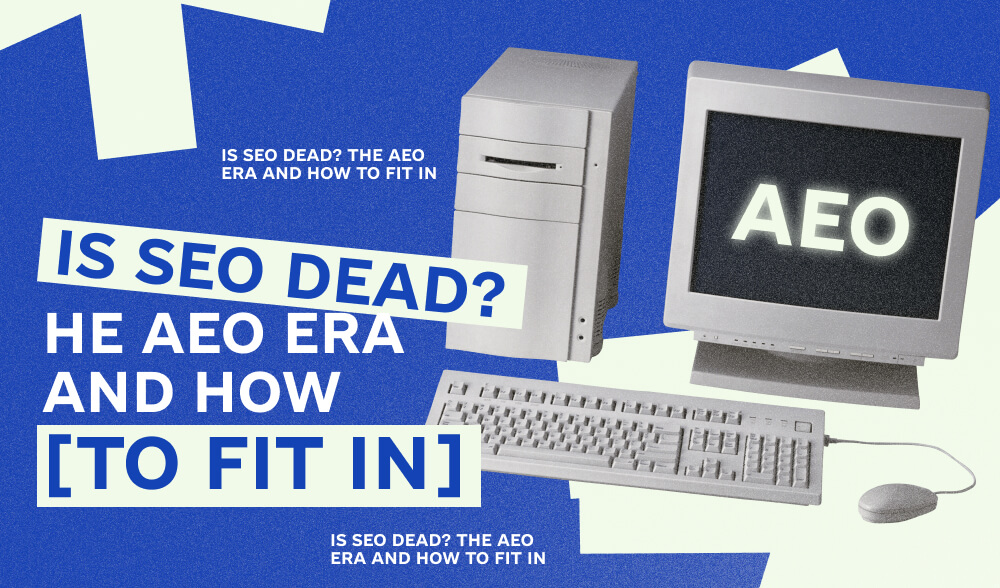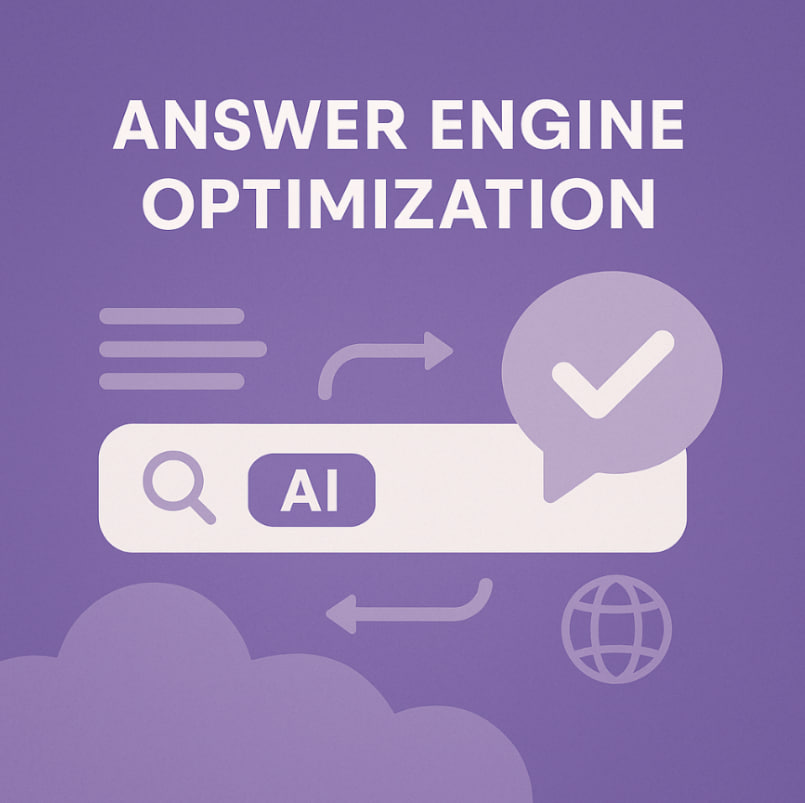Don't miss interesting news

That’s what various experts say, and they’re right. Do you remember the days when it was enough to write an article with +- properly selected keys, add a couple of links, and you were in the top? There is still a chance for this, but at the same time, a new world has emerged where artificial intelligence decides what to show the user first.
Today we are dealing not only with Google Search but also with AI Overviews, ChatGPT, Copilot, Perplexity. This means that we deal not only with SEO but also with AEO – Answer Engine Optimization.
This is a new approach to how to create content so that it gets in response, not just in the SERPs.

SEO (Search Engine Optimization) is about how to get a click from a search: you need to add keywords, meta descriptions, links, relevant positions and hope that a person will click on your article.
AEO (Answer Engine Optimization) is about becoming a source of answers. AEO optimizes content so that it can become a part of the answer that the user will receive not through a classic search, but directly in AI results.
On Google, it is AI Overviews, a block with a generative answer and sources. In Bing, it is Copilot that combines search and generative text. In ChatGPT (versions with Internet access), it is answers with links generated in real time.
And the main thing here is that according to the latest research, up to 65% of searches in 2025 will be completed without a single click. Users read a short answer from AI and move on.
AEO depends on how easy the content is to read for AI.
AI models work according to the retrieval-augmented generation scheme: they search in real time, combine with what they already know, and give an answer. But they choose what to cite for a reason.
Here’s what influences this:
Once upon a time, we fought for CTR. Today, we fight for it and for a place in the AI response.
AI doesn’t show links right away. Most often, it is just text and a link icon on the right side. This means that you can be in the top 3, but still not get a click.
That is, it is important not only to rise in the SERPs, but also to be the one quoted by AI.
The tips below are based not only on common sense, but also on specific research. Lauren Welles Medley, who is the Director of Channels and SEO at a US company, analyzed 3000 cases of content citations in AI Overviews with her team to find out what type of content is most effective.
The main conclusions:
These tips make sense not only as a theory, but also as a working strategy.
Start with the answer
In the introduction, give a clear, concise answer to the request. Then follow with explanations and examples. This increases the chances of getting into a featured article or AI Overviews.
Optimize the structure
Add schema markup
This will help AI to better “read” the content of the page.
Write in the language of the answers
AI chooses not just good text, but text that “sounds like an answer”. Instead of marketing slogans, it’s a clear fact + an example.
Update outdated materials
According to Amsive research, the peak of citations is in the first days. Then algorithms prefer fresher sources, so existing articles need to be updated with relevant information once in a while.
Don’t think that SEO is dead. But ignoring the new reality will also be “fuckup.”
AEO is just another layer of optimization. It works together with SEO and even with GEO (Generative Engine Optimization), which is focused on ensuring that AI doesn’t just quote, but builds a response based on your content.
| Type of query | What works better | Example query |
| Informational | AEO + GEO | What is retention in Facebook Ads |
| Commercial | SEO | Купити спай-сервіс |
| Comparative / ratings | AEO + SEO | Найкращі spy-сервіси 2025 |
Before you hit publish, check it out:
AEO is not a replacement for SEO, but an extension of it. If your content is perfect for SGE and AI, you have a chance to be noticed and quoted, even without a click.
Yes, the fight for traffic continues. But now it starts not in the Google search results list, but in AI responses.
That’s why it’s time to adapt your pages to the new reality: where AI doesn’t just read, but decides who deserves to be the best answer.